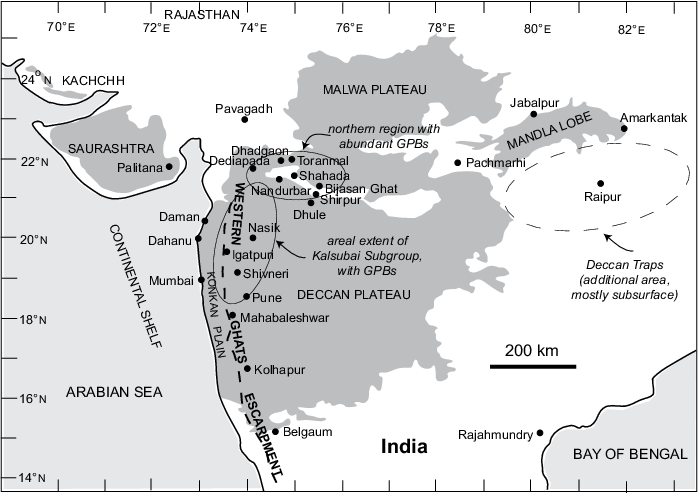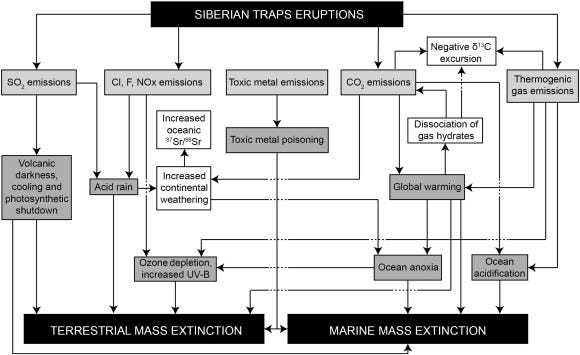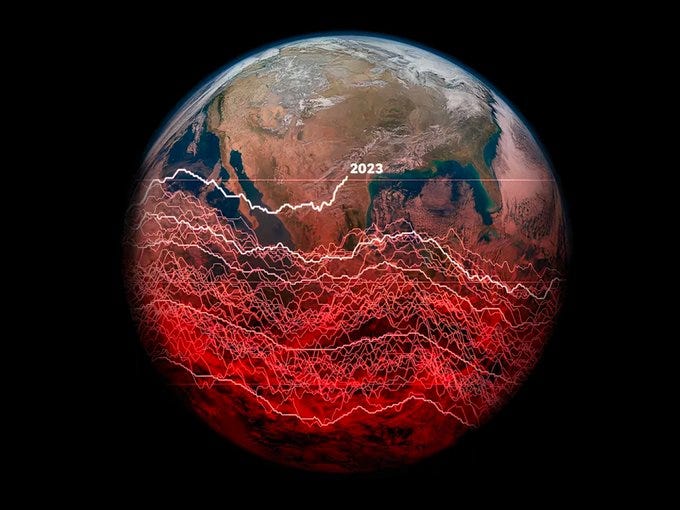Revisiting the Dinosaur Extinction: Asteroids and Climate Change
Written on
Understanding the Dinosaur Extinction
When we think of the dinosaurs' demise, we often picture a colossal asteroid striking Earth, followed by volcanic eruptions. This traditional narrative has dominated our understanding for years.
However, recent geological studies indicate that the dinosaurs were already facing severe climate challenges due to extensive volcanic activity before the asteroid's collision. It appears that we may need to revise our childhood perceptions of this extinction event.
A Clash of Cosmic and Earthly Forces
The extinction event that eradicated the dinosaurs, known as the Cretaceous-Paleogene (K-Pg) extinction, has been a subject of intrigue for both scientists and the public. The widely accepted explanation points to a 6-mile-wide asteroid that collided with the Yucatán Peninsula 66 million years ago, forming the Chicxulub crater. This catastrophic impact led to widespread fires, tsunamis, and a "nuclear winter" effect that blocked sunlight, resulting in a sharp temperature drop and disrupting ecosystems.
Recent evidence, however, suggests that volcanic eruptions in the Deccan Traps of India may have played a crucial role in the dinosaurs' decline. This theory posits that significant volcanic activity occurred 300,000 years prior to the asteroid impact and continued for another 500,000 years. These eruptions released vast quantities of carbon dioxide and sulfur dioxide, causing climate fluctuations that adversely affected the environment and biodiversity.
“Our findings support the idea that volcanism was altering atmospheric conditions long before the asteroid arrived,” states Alexander Cox, a computational geologist at Dartmouth College and the lead author of a recent study published in Science. “Environmental scenarios leading to dinosaur extinction can be modeled solely through volcanic activity, independent of the asteroid's impact. Still, we cannot ignore the asteroid's role in further complicating the situation.”
The Deccan Traps: A Geological Marvel
The Deccan Traps, a flood basalt province located on the Deccan Plateau in west-central India and southern Pakistan, is one of the largest volcanic provinces globally. This region features a series of flat-lying basalt lava flows, extending more than 2,000 meters thick and covering nearly 500,000 square kilometers.

The Impact of Gases: CO2 and SO2
Throughout nearly a million years, the Deccan Traps erupted, releasing an estimated million cubic kilometers of lava along with 10.4 trillion tons of carbon dioxide and 9.3 trillion tons of sulfur dioxide into the atmosphere. In comparison, human emissions have reached approximately 16 billion tons of CO2 annually since the beginning of the 21st century—about 100 times the rate of emissions from the Deccan Traps.
These prolonged eruptions created a consistent release of greenhouse gases, contributing to a warming effect, while sulfur dioxide reflected solar radiation, leading to cooling. The uneven release of these gases resulted in significant temperature fluctuations over time.
Acid Rain, Ocean Acidification, and Disruption of the Carbon Cycle
The volcanic activity in the Deccan Traps had extensive consequences. The gases released contributed to acid rain and ocean acidification, disrupting the delicate carbon cycle. Marine organisms like foraminifera, which rely on carbon for their shells, struggled to survive in increasingly acidic waters. This disruption cascaded through the food chain, leading to the extinction of plants, herbivores, and subsequently, carnivores.

Innovative Approaches in Extinction Research
This study sought to explore the extinction question through a novel approach devoid of preconceived hypotheses. Utilizing machine learning with 128 processors, researchers adjusted CO2 and SO2 levels to simulate observed data and identify potential scenarios. By analyzing extensive geological and climatic data, they aimed to unravel the cause of the extinction event.
“Instead of starting from geological records, our model worked towards them. It ran 300,000 scenarios to determine how varying levels of CO2 and SO2 could create a climate consistent with fossil records,” explains Alexander Cox.
Fossil Evidence as Climate Indicators
Studying ancient climates presents challenges, but scientists have a valuable resource in foraminifera—tiny marine organisms with calcium carbonate shells. By examining the isotopic composition of these shells, researchers can infer atmospheric carbon levels and ocean temperatures from millions of years ago, providing insights into the climatic conditions during the age of dinosaurs.
The One-Two Punch of Asteroid and Volcanism
Emerging fossil evidence suggests a complex interaction between the asteroid impact and pre-existing volcanic activity in the Deccan Traps. The asteroid collided with a planet already experiencing devastating volcanic eruptions, which may have intensified due to the impact itself. This interplay of cosmic and terrestrial forces complicates our understanding of the extinction event.
The model indicated a significant decline in natural carbon buildup in the ocean during the Chicxulub impact, likely linked to the asteroid's arrival. Despite the asteroid's release of carbon and sulfur dioxide, the model revealed no sharp increase in gas emissions at that time, challenging the idea that the asteroid's gases were a primary extinction factor.
While some scientists maintain that the asteroid played a vital role, emphasizing the darkness it caused, which could block sunlight for years, others argue for a more nuanced understanding that includes the effects of volcanic activity.
Lessons for Today’s Climate Crisis
The narrative surrounding the dinosaurs' extinction is evolving beyond a simple "volcanoes vs. asteroid" debate. Researchers are increasingly recognizing the combined effects of volcanic activity and asteroid impact.
This understanding of Earth's history highlights the intricate interactions between catastrophic events. Rather than attributing the extinction to a single cause, it is essential to acknowledge the complex interplay of cosmic and terrestrial forces that contributed to the ancient disaster. The consequences of volcanic eruptions—greenhouse gas emissions, acid rain, ocean acidification, and disruptions to the carbon cycle—were exacerbated by the asteroid impact.
As research continues, humanity can derive valuable lessons from the past regarding the delicate balance of Earth's ecosystems and the dire consequences of environmental disruptions.
Given that the volcanic activity spanned over a million years, our human-induced emissions are now occurring at a rate 100 times faster, projecting a similar outcome within 10,000 years. To illustrate this, if we compress the universe's 13.8 billion-year history into a single year, 10,000 years equates to approximately 23 seconds—a sobering reminder of our rapid impact on the planet.
The climate crisis demands urgent attention. The global temperature is nearing a critical threshold of 1.5°C above pre-industrial levels, a limit established by the Paris Agreement to prevent irreversible damage. This threshold, once predicted for 2050, is now imminent.
Alarming statistics indicate that over a billion lives could be jeopardized by climate-related disasters in the coming century. In contrast, COVID-19 has claimed around 7 million lives. The "1000-ton rule" suggests that for every 1000 tons of CO2 emitted, one future life is lost. We are hastening our emissions with alarming speed.

We stand at a pivotal moment in the battle against global warming, where every decision is crucial. Much like the dinosaurs, we cannot foresee when our final opportunity to act will arrive. We may have created our own lethal asteroid in the form of fossil fuels while remaining oblivious to the true danger lurking beneath our feet.
Thank you for your careful reading and support!
For more insights into climate change, scientific advancements, and geopolitics with a unique perspective, consider subscribing to the Antarctic Sapiens newsletter for weekly thought-provoking content.
The first video title is What If An Asteroid Didn't Kill The Dinosaurs? (4K Documentary) - YouTube. This documentary explores alternative scenarios surrounding the extinction of the dinosaurs, delving into the intricate dynamics between cosmic events and Earth's geological activities.
The second video title is The Asteroid That Swiped Dinosaurs From Earth Didn't Come Alone - YouTube. This video discusses the role of volcanic activity in the extinction event, highlighting the multi-faceted causes that contributed to the demise of the dinosaurs.